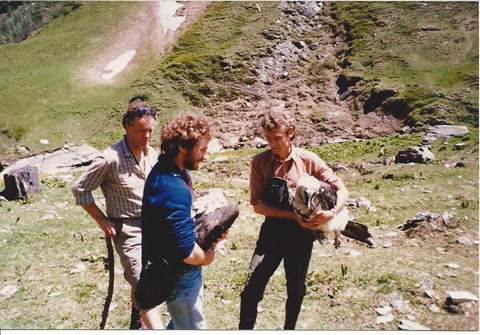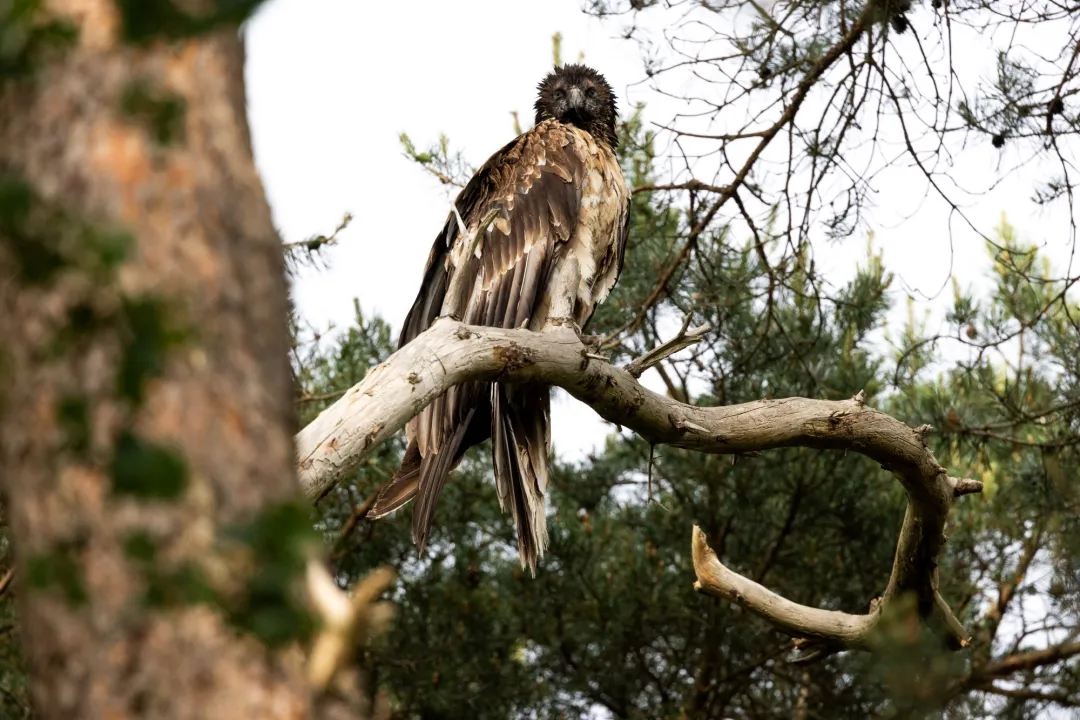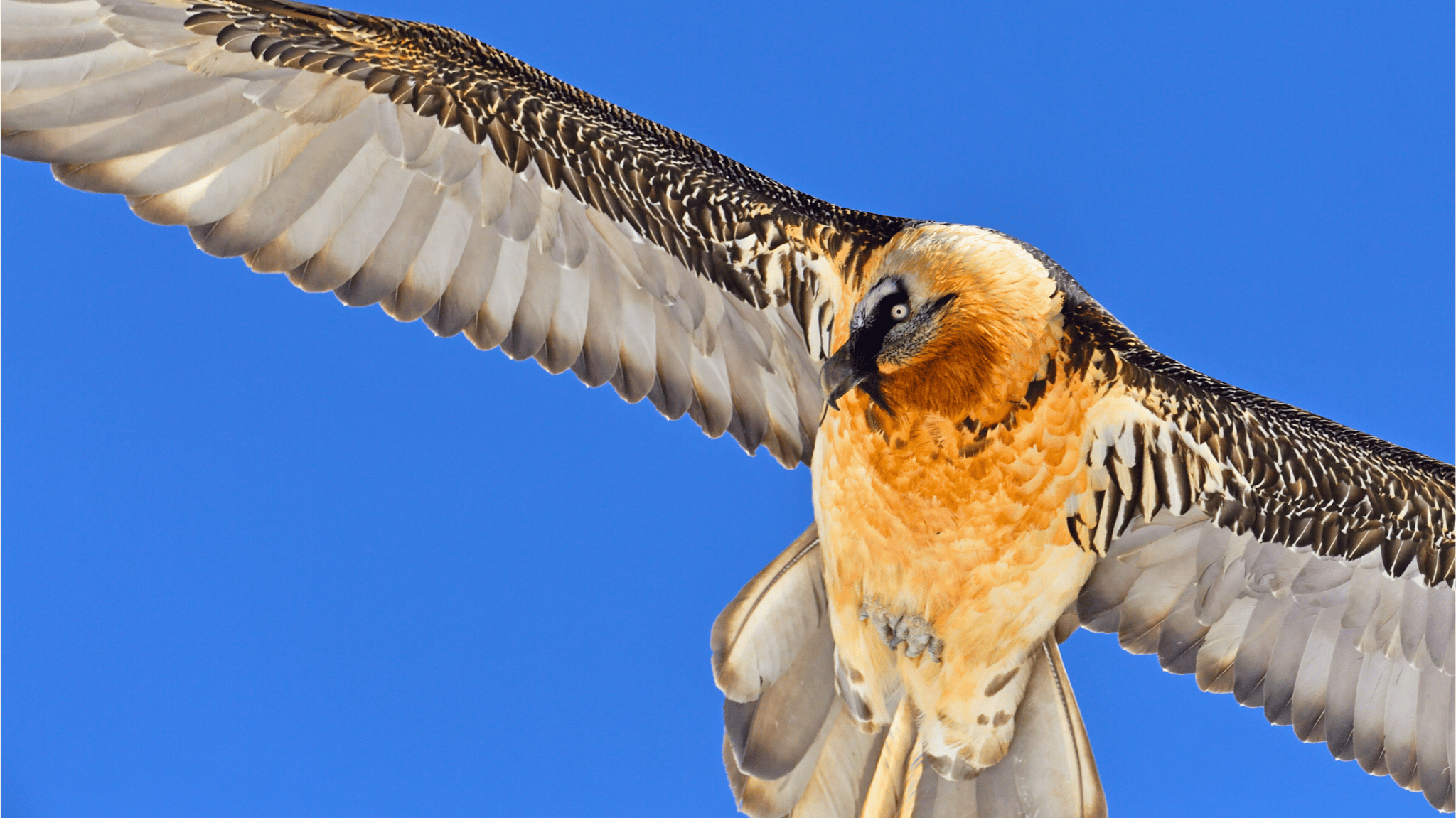
The 2019/20 Bearded Vulture breeding season in the wild got off to an early start, with Bearded Vulture pairs already incubating eggs in European mountain ranges, facing blizzards, snow and cold temperatures. The first observation of a pair incubating a clutch of eggs in the Alps was reported in early December, which is an early start to the egg laying.
Bearded Vulture Breeding Season in the wild
Bearded Vultures are the earliest breeders of the four European vulture species. Bearded Vultures in the Alps usually start to lay eggs in late December and continue up until February, with parents sharing brooding responsibilities until the chick hatches after an average of 54 days. This special breeding period is related to the diet of the chicks, which cannot digest bone, so the species has evolved to hatch towards the end of winter when there is potentially a plentiful supply of food. This includes animals that died from avalanches and are then exposed in the thawing snow or animals that die towards the end of the season from not surviving harsh conditions, leaving plenty of animal carcasses for the parents to feed their chicks.
First clutch in the Alps
Our Italian colleagues reported the first clutches of the year in the Alps to the International Bearded Vulture Monitoring (IBM) for the past three consecutive breeding seasons. In the 2017/18 breeding season the first recorded clutch laid by a breeding pair was reported from a pair in Planeil in the South Tyrol region of the Italian Alps on the 30 December 2017. The following year, the Italians also reported the first observation of incubating a clutch, this time from a breeding pair in Bormio in the Parco Nazionale dello Stelvio on 10 December 2018. And this year again, this pair laid the first clutch of the season on 6 December, even earlier than last year. Back in 1998, this was the first pair to breed in the Italian Alps following the reintroduction of the species after Bearded Vultures went extinct across the Alps at the beginning of the 20th Century.
Clutches in the Alps
In addition to the first observed clutch, there were three other clutches reported within the IBM up to today.
Another clutch was observed in Italy in Zebru by the pair Heinz-Serraglio and Felice on 26 December. The pair laid 18 clutches since 2002, which resulted in 15 fledglings.

For the third consecutive year, the trio of Bearded Vultures of the Haut-Dauphiné, France, has laid an egg. This time, the laying took place on 2 January, a few days earlier compared to the previous years. Thanks to this pair, a Bearded Vulture hatched and fledged in 2018 after more than a Century of no successful breeding of Bearded Vultures in the Park National de Ecrins.
Finally, another pair laid a clutch in France in the Aravis area on 3 January. Since 2006, the pair laid 15 eggs, of which, eight successfully fledged.
You can follow the latest breeding season news by following #BeardedVultureBreedingSeason on Twitter and Facebook – we will be publishing updates over the upcoming weeks.
Bearded Vultures in the Alps

The species was driven to extinction in the Alps during the 20th Century, and to bring them back, pioneers from all Alpine countries initiated the reintroduction project in the 1970s. The first birds were released in 1986 at Hohe Tauern National Park (Austria), and in 1997 the first breeding pair successfully raised a chick in the wild in France.
Today, there are between 250 and 280 Bearded Vultures, including 55+ breeding pairs, across the Alps. This reintroduction project has sparked the imagination and gathered the support of many stakeholders across the Alpine chain and is considered one of the best wildlife comeback stories of all times!
International Bearded Vulture Monitoring (IBM)

The International Bearded Vulture Monitoring Network (IBM) is a unique international collaboration led by the Vulture Conservation Foundation between national & natural parks and non-governmental organisations to coordinate the monitoring activities for European Bearded Vulture populations. Through this network, data about the Bearded Vulture in Europe is collected, shared and made available to everyone working for the conservation of the species. The IBM-network also uses this data and comes together to discuss conservation strategies and priorities for this species on an international level. There are currently 16 partners and two associated organisations part of the IBM-network.
If you have any Bearded Vulture observations and photographs in the Alps, please report them here.




